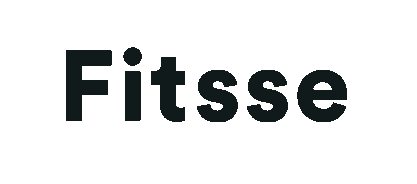Before diving in, here’s the bottom-line takeaway: there is no one-size-fits-all “perfect” workout length—rather, science points to ranges optimized for different goals (strength, hypertrophy, endurance, metabolic health) and shows diminishing returns (or even risks) beyond certain durations. Short, high-intensity bursts (<30 minutes) reliably boost cardiovascular fitness and insulin sensitivity; moderate sessions (30–60 minutes) strike a balance for strength and hypertrophy; and long workouts (>60 minutes) suit endurance but can elevate stress hormones and risk overtraining. Weekly totals (150–300 minutes of moderate or 75–150 minutes of vigorous activity) remain the gold standard for general health, but individual factors—fitness level, recovery capacity, schedule, and specific goals—should guide session length and frequency.
The Science of Session Length
Exercise duration influences hormonal responses, metabolic stress, and recovery needs. For instance, brief, intense efforts spike growth hormone (GH) and adrenaline without excessive cortisol release, whereas prolonged sessions (>60 minutes) can elevate cortisol and impair immunity if not balanced by nutrition and rest. Meanwhile, muscle protein synthesis (MPS) peaks within the first 45 minutes of resistance training, with added volume producing diminishing returns on hypertrophy unless accompanied by extra recovery. Cardiovascular adaptations—like improved VO₂max—occur even in short, high-intensity interval training (HIIT) protocols lasting as little as 10 minutes.
Short Workouts (<30 Minutes)
Why Short Works
- Hormonal Efficiency: Brief, high-intensity bouts trigger GH and catecholamine release, promoting fat oxidation and muscle retention without prolonged cortisol exposure.
- Time-crunched Gains: Meta-analyses show that 10–20 minute HIIT sessions can yield similar aerobic and metabolic benefits to 45 minute moderate-intensity workouts, albeit with a higher perceived effort.
When to Use
- Busy schedules or as supplemental “finisher” sessions.
- As recovery-friendly alternatives on off-days to maintain weekly volume without overtaxing joints.
Sample Short Workout
- Warm-up: 2 min dynamic mobility
- 6 × 30 s all-out cycling (or sprinting) with 30 s rest
- 3 × 10 bodyweight squats or push-ups, 20 s rest
- Cool-down: 2 min foam roll.
Moderate Workouts (30–60 Minutes)
The Sweet Spot
- Hypertrophy and Strength: Research suggests 30–45 minutes is optimal for muscle growth, allowing 3–5 sets per muscle group with adequate rest (1–2 minutes) without excessive fatigue.
- Cardio and Conditioning: A 30 minute moderate-intensity run or cycling session hits the caloric burn sweet spot for most recreational trainees.
Physiological Rationale
- MPS Window: The majority of MPS occurs in the initial 20–40 minutes of resistance training; extending beyond can still add volume but demands increased nutrient intake to avoid overreaching.
- Glycogen Utilization: Moderate durations deplete muscle glycogen effectively, promoting adaptations without the cortisol surge seen in longer endurance work.
Sample Moderate Workout
- Strength Split (45 min):
- Squat: 4 × 6 @ 80% 1RM, 2 min rest
- Bench press: 4 × 8 @ 70% 1RM, 90 s rest
- Pull-up: 3 × max reps, 90 s rest
- Core circuit: 3 × plank, side-plank, hollow hold (30 s each).
Long Workouts (>60 Minutes)
Pros and Cons
- Endurance Gains: Running or cycling for 60–120 minutes at moderate intensity leans heavily on mitochondrial biogenesis and capillarization.
- Risk of Overtraining: Sessions beyond 90 minutes without fueling can spike cortisol and blunt immune function, increasing injury risk and illness susceptibility.
When to Go Long
- Training for endurance events (marathon, triathlon).
- When focusing on skill acquisition in low-impact disciplines (e.g., yoga, Pilates).
Sample Long Workout
- Endurance Ride (90 min):
- Warm-up: 10 min easy spinning
- Main: 70 min at 65–75% max heart rate
- Cool-down: 10 min easy spinning
- Nutrition: 30–60 g carbs per hour.
Weekly Duration Guidelines
Public health bodies converge on these weekly totals for adults:
- Moderate Intensity: 150–300 minutes per week.
- Vigorous Intensity: 75–150 minutes per week.
- Resistance Training: ≥2 days per week, targeting major muscle groups.
Accumulating these minutes can be done via a few long sessions or many short ones; what matters more is consistency and meeting or exceeding the minimum thresholds.
Individualizing Duration
Goal-Specific Tweaks
- Strength/Hypertrophy: 30–60 minutes, 3–6 sessions/week, focusing on load and volume management.
- Fat Loss: Mix moderate sessions (30–45 min) with short HIIT (10–20 min) to maximize caloric burn and metabolic after-burn.
- Endurance: Include at least one long (60–120 min) session per week plus shorter tempo runs/cycling.
Recovery and Lifestyle
- Sleep, Nutrition, Stress: If recovery is compromised, favor shorter sessions or reduce frequency to prevent overreaching.
- Time Availability: Real-world schedules often dictate session length; consistency beats perfection—better three 20 min sessions than one missed 60 min workout.
Practical Tips for Session Planning
- Start with Your Goal: Choose duration aligned with your primary aim—strength, muscle, endurance, or health.
- Track Perceived Effort: Use the Rate of Perceived Exertion (RPE) scale to ensure you’re hitting the right intensity for your time frame.
- Periodize: Cycle longer, moderate, and shorter sessions across microcycles (e.g., weekly) to balance stimuli and recovery.
- Fuel Smart: For sessions over 45 minutes, plan intra-workout nutrition (carbs + electrolytes) to sustain performance and curb cortisol spikes.
- Monitor Recovery: Watch resting heart rate, sleep quality, and mood to adjust session length or frequency before overtraining sets in.
Wrapping Up
There’s no universal “best” workout duration—it depends on what you want to achieve and how your body responds. Science shows short (<30 min), moderate (30–60 min), and long (>60 min) workouts each have distinct benefits and limits. Aim for weekly totals of 150–300 minutes moderate or 75–150 minutes vigorous activity, plus ≥2 resistance sessions. Then, fine-tune session length based on goals, recovery capacity, and real-life demands. With thoughtful planning—incorporating intensity, volume, and rest—you’ll be able to maximize gains, stay healthy, and keep workouts fresh and sustainable. Enjoy the process and remember: consistency, not duration alone, is what drives progress.
Recent studies suggest incorporating mindfulness practices, such as yoga or meditation, into workout routines can enhance recovery and reduce stress, potentially allowing for longer or more frequent sessions without the negative effects of overtraining. Additionally, wearable technology advancements now offer more precise tracking of workout intensity and recovery metrics, helping individuals tailor their exercise duration more effectively to their personal needs and goals.















One Comment